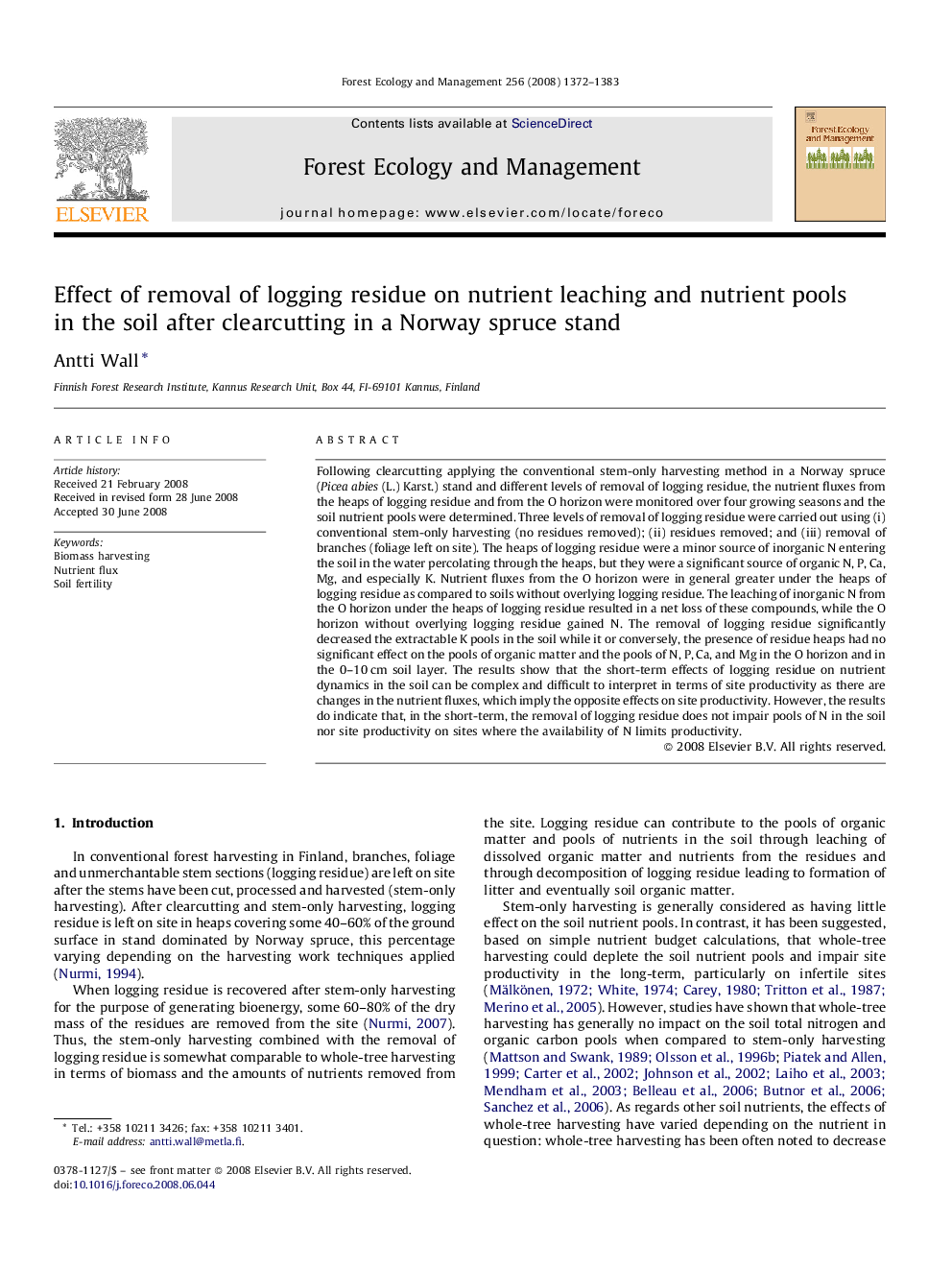| کد مقاله | کد نشریه | سال انتشار | مقاله انگلیسی | نسخه تمام متن |
|---|---|---|---|---|
| 89550 | 159344 | 2008 | 12 صفحه PDF | دانلود رایگان |

Following clearcutting applying the conventional stem-only harvesting method in a Norway spruce (Picea abies (L.) Karst.) stand and different levels of removal of logging residue, the nutrient fluxes from the heaps of logging residue and from the O horizon were monitored over four growing seasons and the soil nutrient pools were determined. Three levels of removal of logging residue were carried out using (i) conventional stem-only harvesting (no residues removed); (ii) residues removed; and (iii) removal of branches (foliage left on site). The heaps of logging residue were a minor source of inorganic N entering the soil in the water percolating through the heaps, but they were a significant source of organic N, P, Ca, Mg, and especially K. Nutrient fluxes from the O horizon were in general greater under the heaps of logging residue as compared to soils without overlying logging residue. The leaching of inorganic N from the O horizon under the heaps of logging residue resulted in a net loss of these compounds, while the O horizon without overlying logging residue gained N. The removal of logging residue significantly decreased the extractable K pools in the soil while it or conversely, the presence of residue heaps had no significant effect on the pools of organic matter and the pools of N, P, Ca, and Mg in the O horizon and in the 0–10 cm soil layer. The results show that the short-term effects of logging residue on nutrient dynamics in the soil can be complex and difficult to interpret in terms of site productivity as there are changes in the nutrient fluxes, which imply the opposite effects on site productivity. However, the results do indicate that, in the short-term, the removal of logging residue does not impair pools of N in the soil nor site productivity on sites where the availability of N limits productivity.
Journal: Forest Ecology and Management - Volume 256, Issue 6, 5 September 2008, Pages 1372–1383